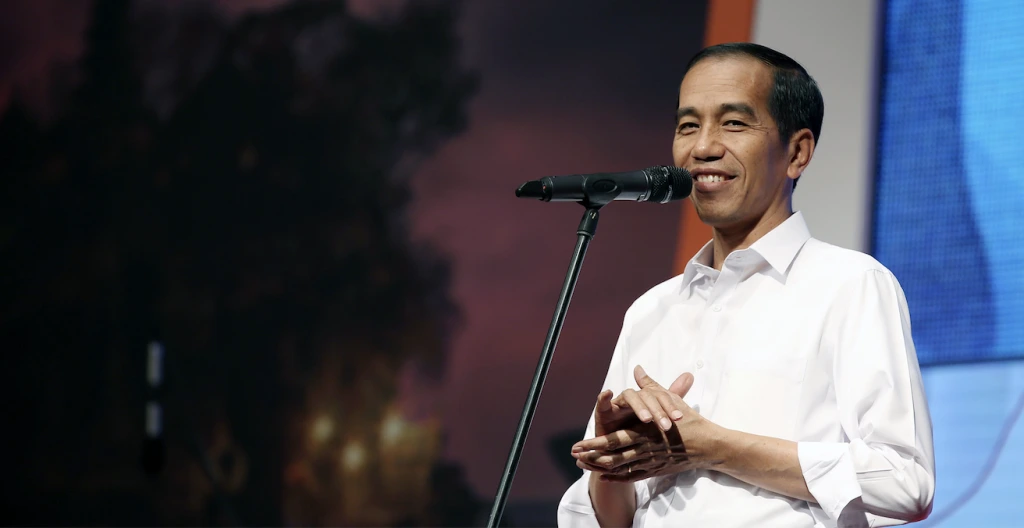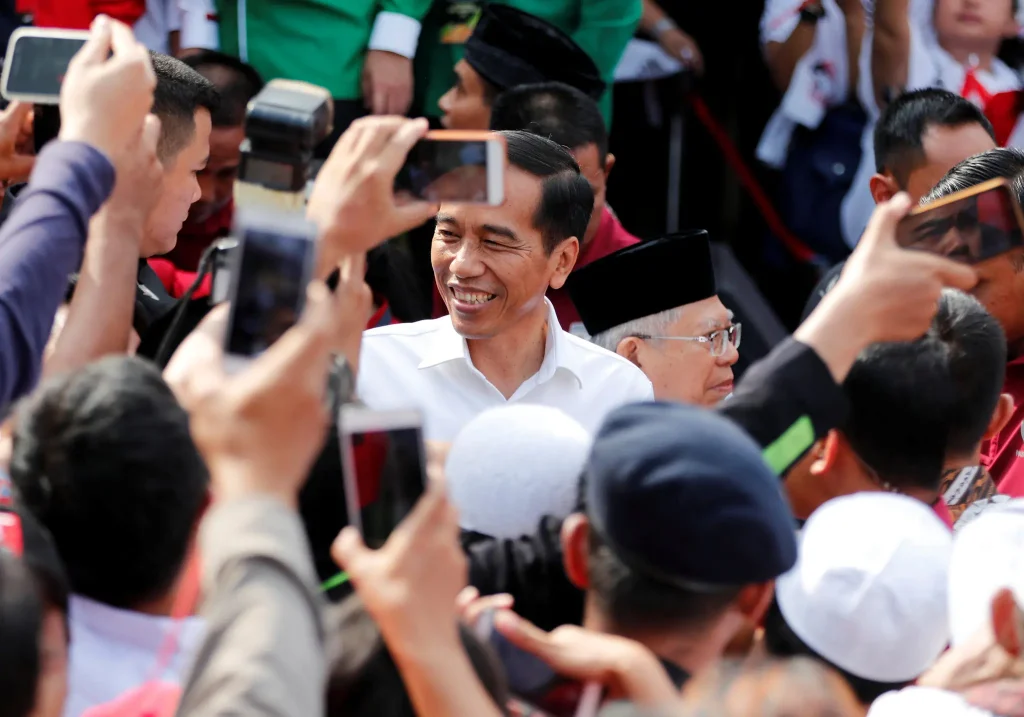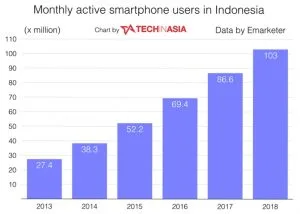Trade secrets to build a successful digital campaign, according to Farina Situmorang, who led Indonesian president’s Joko Widodo’s digital campaign
In 2014, Joko Widodo, popularly known as Jokowi, the governor of Jakarta and a former businessman, claimed victory at the presidential elections.
He secured 53.15 percent of the vote over his election rival Prabowo Subianto. Widodo is currently serving his second term as president.
Farina Situmorang, co-founder and CEO of Pensieve and the digital marketing lead in Widodo’s first presidential campaign, was tasked with the critical role of converting swing and undecided voters through digital means.
Inspired by the success of Widodo’s digital campaign, she co-founded Pensieve, a startup that uses data and artificial intelligence to help enterprises and government agencies transform digitally.
Situmorang also has extensive experience working in top tech companies in Silicon Valley and Canada – Blackberry, WhatsApp, IBM and Microsoft to name a few.
She shared her winning strategy at the Greater virtual event titled Inside Scoop on the Guerrilla Digital Campaign of President Jokowi, moderated by Simon Kemp.

Inside Scoop on the Guerrilla Digital Campaign of President Jokowi with Farina Situmorang and Simon Kemp
Kemp is the Founder and CEO of market intelligence firm, Kepios. Kepios is also the author of Digital 2022: Global Overview report, a market research firm specialising in online behaviours.
Why Digital
Embarking on a digital campaign made perfect sense, as Indonesia was undergoing a digital boom in 2014.
According to statistics by Tech in Asia, mobile penetration and social media use was accelerating fast in the archipelago.
In 2014, there were already 38.13 million active smartphone users in Indonesia. The number of these users were growing fast, with Tech In Asia projecting 100 million smartphone users by 2018.
For reference, the Indonesian population as of 2021 stands at 273 million, according to Statista.
The digital campaign leveraged social media to reach out to everyday Indonesians, who are some of the world’s biggest users of social media platforms.
As of 2021, there are 170 million social media users in the country, ranking Indonesia third behind China and India.
3 Toolkits from the Widodo Campaign
During the event, Situmorang shared three specific toolkits that formed the backbone of Widodo campaign.

Image Credit: AIIA
1. Extensive A/B testing (also known as rapid iteration testing)
Inspired by the Obama campaign, Situmorang introduced the use of extensive A/B testing on potential voters to the campaign team.
Back then, it was a fairly new way to optimise digital marketing strategies on social media and on the campaign website.
It was also a highly manual process, as the A/B test had not been automated. “We had 20, 30 people constantly doing experiments at that time using Facebook, with different dialects and different communities,” says Situmorang.
A/B testing is a digital marketing tool that tests multiple versions of content to find out which version has better engagement.
It uses data from the tests to implement improvements and optimise websites, social media and other online content, for maximum conversion and engagement.
For Situmorang, it typically involves switching photos, taglines, or campaign copy in Facebook and Whatsapp Groups to suit their audiences’ preferences.
“We used a lot of these tests and experiments to really capture and convert Widodo’s supporters,” she says.
The data collected also reveals insights into user behaviour, engagement rate, pain points and user satisfaction. Today, A/B testing is a must among digital marketers, now that social media has become part of our daily lives.
2. The Strategic Narrative
“Shaping the narrative of Widodo was essential to the campaign”, says Situmorang. “In other words, it’s about deciding how you want the political candidate to be seen”.
For instance, in Widodo’s campaign, a hope-based narrative was applied to sway young voters.

Image Credit: The New York Times, Darren Whiteside / Reuters
“The aim was to portray him as the frontrunner of the people, and to empower people to work hard to unleash the country’s full potential”, according to Situmorang.
Donald Trump’s campaign, on the other hand, used a fear-based narrative – his promise to voters to build a wall to keep Mexicans out is an example.
At the same time, using “words that work” helps to boost the strategic narrative. “It’s not really what you say, it’s what they hear, meaning that it’s always about the audience,” says Situmorang.
For example, “climate change” implies a sense of urgency now that change is already under way; versus “global warming”, which alludes to a warming of temperatures, without telling what the consequences are.
Situmorang also recommends mapping out a defensive strategy for fake news from smear campaigns, intended to undermine the political candidate. “You need to know what to say or how to respond,” she says.
An audience member at the event asked Situmorang how she would approach marketing a person who is unpopular or unlikeable.
Instead of creating a different, more appealing persona, which will be too difficult to manage over the long run, she suggests playing up what they already have.
“Even someone as unlikeable as Trump can get elected”, says Situmorang, “because he played up his deeply unpopular traits”.
“You either have to love someone or you hate someone, you can’t be in the middle. In Trump’s case, you have to go to the extreme right…otherwise you will not get any votes,” she says.
3. The Hero’s Journey
Political manifestos are often hundreds of pages long with political buzzwords and terminology. Needless to say, most ordinary Indonesians have not read Widodo’s manifesto.
In order to transfer its meaning to the masses, Situmorang used everyday characters that are relatable to the layman, such as students, housewives, or young professionals, to convey Widodo’s goals.
Situmorang’s team created comic strips that are shareable on social media, depicting everyday characters benefiting from Widodo’s policies.
View this post on Instagram
If you are a housewife, you may benefit from cheaper consumer goods or better healthcare for the elderly, for example.
The campaign puts the power in the hands of ordinary Indonesians to vote. In other words, they become the heroes in the country’s future.
How do these toolkits translate to the corporate world?
An audience member asked Situmorang how rapid iteration testing works for corporate brands instead of political campaigns.
Situmorang recommended coming up with three to five different hypotheses for testing, with a marketing strategy mapped out for each hypothesis.
The first round of testing should be done ”in a very cheap way” to find out which one resonates with the audience the most without investing too much.
Then comes the shortlisting of the hypotheses to two. After which, more investment can be made into further experimentation of the two hypotheses, just to see which one works better.
But Situmorang maintains that there isn’t a risk-free way to conduct A/B testing. Ultimately, you will still make a bet on which hypothesis works. That’s where a defensive strategy to counter any risk comes in, she adds.
She also suggests looking at all digital marketing metrics and analysing the data that comes from it, and make improvements or go back to the drawing board, during the course of the marketing campaign.
This includes all types of touch points, from call-to-action buttons, to images, to email subject headers.
“It’s also important to recognise if it’s not working, and you have to completely switch. So it’s always good to have a back up plan,” she says.
**
If you would like to gain access to exclusive inside scoops and discover insights from industry expert speakers such as Farina Situmorang, join the Greater community today.
Find out how: www.thegreaterclub.co/join



